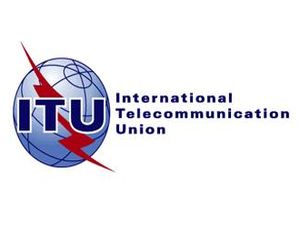



Date:22/12/11
 New ITU standards for smart grid have achieved final approval and are now available for download. Recommendations ITU-T G.9955 and G.9956 define three international next generation narrowband powerline communications (NB-PLC) standards.
New ITU standards for smart grid have achieved final approval and are now available for download. Recommendations ITU-T G.9955 and G.9956 define three international next generation narrowband powerline communications (NB-PLC) standards.
The approved family of standards will enable cost-effective smart grid applications such as distribution automation, diagnostic and fault location, smart metering, demand response, energy management, smart appliances, grid-to-home communications and advanced recharging systems for electric vehicles.
The next-generation NB-PLC transceivers defined in the ITU standards family are optimized for the various topologies and characteristics of power grids around the world. Standardized transceivers will provide a 'smart' link between electricity and communications networks through their support of the use of power lines as a communications medium.
PLC exploits electricity networks' existing wired infrastructure, greatly reducing the cost of deploying a dedicated communications channel.
Dr Hamadoun Touré, Secretary General, ITU: "The approved ITU NB-PLC family of international standards will be a fundamental building block for realizing a robust smart grid anywhere in the world, and will allow utilities to start immediate deployment of NB-PLC on a worldwide basis.”
ITU-T Recommendations G.9955 and G.9956 contain the physical layer (PHY) and the data link layer (DLL) specifications, respectively, for NB-PLC transceivers based on OFDM (orthogonal frequency-division multiplexing).
The specifications define technologies that support indoor and outdoor communications over direct current and alternating current power lines (including low and medium voltage lines), through transformer communications, for both urban and long distance rural communications and at frequencies below 500 kHz. The approved ITU NB-PLC family of standards includes three separate and self-contained specifications:
The standards incorporate electromagnetic compatibility (EMC) and mitigation techniques defined in collaboration with ITU’s Radiocommunication sector (ITU-R) that ensure a high degree of protection of radio services from PLC emissions.
Richard Schomberg, IEC Smart Grid Strategic Group Chairman: “This world-first standard publication on Narrowband OFDM PLC technology can bridge the large gap of sub-dollar chips to unlock a gigantic smart grid market of advanced machine-to-machine communication with enhanced speed but ultra-high resiliency. It is a complementary and essential piece of the large puzzle of standards that IEC is assembling with ITU and ISO.”
ITU approves new worldwide smart grid standards
 New ITU standards for smart grid have achieved final approval and are now available for download. Recommendations ITU-T G.9955 and G.9956 define three international next generation narrowband powerline communications (NB-PLC) standards.
New ITU standards for smart grid have achieved final approval and are now available for download. Recommendations ITU-T G.9955 and G.9956 define three international next generation narrowband powerline communications (NB-PLC) standards.The approved family of standards will enable cost-effective smart grid applications such as distribution automation, diagnostic and fault location, smart metering, demand response, energy management, smart appliances, grid-to-home communications and advanced recharging systems for electric vehicles.
The next-generation NB-PLC transceivers defined in the ITU standards family are optimized for the various topologies and characteristics of power grids around the world. Standardized transceivers will provide a 'smart' link between electricity and communications networks through their support of the use of power lines as a communications medium.
PLC exploits electricity networks' existing wired infrastructure, greatly reducing the cost of deploying a dedicated communications channel.
Dr Hamadoun Touré, Secretary General, ITU: "The approved ITU NB-PLC family of international standards will be a fundamental building block for realizing a robust smart grid anywhere in the world, and will allow utilities to start immediate deployment of NB-PLC on a worldwide basis.”
ITU-T Recommendations G.9955 and G.9956 contain the physical layer (PHY) and the data link layer (DLL) specifications, respectively, for NB-PLC transceivers based on OFDM (orthogonal frequency-division multiplexing).
The specifications define technologies that support indoor and outdoor communications over direct current and alternating current power lines (including low and medium voltage lines), through transformer communications, for both urban and long distance rural communications and at frequencies below 500 kHz. The approved ITU NB-PLC family of standards includes three separate and self-contained specifications:
- G.hnem: a new NB-PLC technology developed by ITU-T in cooperation with members of the G3-PLC and PRIME Alliances;
- G3-PLC: an established and field-proven NB-PLC technology contributed by members of the G3-PLC Alliance;
- PRIME: an established and field-proven NB-PLC technology contributed by members of the PRIME Alliance
The standards incorporate electromagnetic compatibility (EMC) and mitigation techniques defined in collaboration with ITU’s Radiocommunication sector (ITU-R) that ensure a high degree of protection of radio services from PLC emissions.
Richard Schomberg, IEC Smart Grid Strategic Group Chairman: “This world-first standard publication on Narrowband OFDM PLC technology can bridge the large gap of sub-dollar chips to unlock a gigantic smart grid market of advanced machine-to-machine communication with enhanced speed but ultra-high resiliency. It is a complementary and essential piece of the large puzzle of standards that IEC is assembling with ITU and ISO.”
Views: 1367
©ictnews.az. All rights reserved.Similar news
- 24% of U.S. Adults have made phone calls on the Internet
- UNESCO puts sustainable learning online
- Australia gives incentives for the use of telehealth
- US launches computer programme for poor kids
- UN declares web access as human right
- Facebook growth slows in stalkerbase heartlands
- One Third of Millionaires Use Social Media
- Facebook Seeks Bigger Role in Software for Mobile Apps
- Icann increases web domain suffixes
- IBM launches new social networking platform for enterprises
- Google Notches One Billion Unique Visitors Per Month
- Internet providers cut international channel renting costs by 60%
- Azerbaijan launches standard time on internet
- Icann launches facility to ease DNSSec adoption
- Social network data mining yields worrying results for traditional media





















